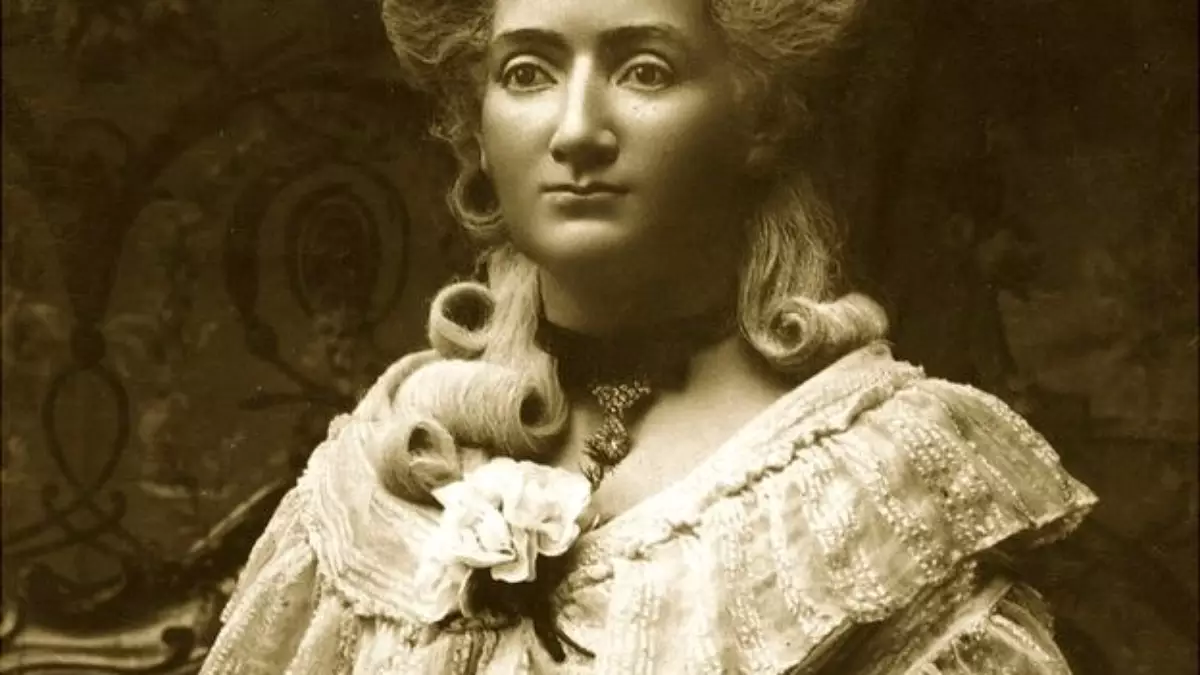Marie Grosholtz, who would later become known as Madame Tussaud, was born in Strasbourg, France, in 1761.
Her early exposure to wax modeling began under the tutelage of Dr. Philippe Curtius, a Swiss physician and wax sculptor who took Marie under his wing after her mother became his housekeeper.
Early Years as Royal Tutor
Marie was quick to master the art. By the tender age of 16, she started making wax models herself. Her talent did not go unnoticed.
She found herself serving as an art tutor to King Louis XVI’s sister at the Palace of Versailles, mingling with high society and creating wax models of some of the most influential figures of the time.
This was no small feat for a young woman of her age and social status, considering the significant class divisions of the time.
Living at the palace, Marie became immersed in the splendor and luxury of the French court.
She created her first waxwork of note during this period – a lifelike model of the famed author and philosopher Voltaire.
She also created wax figures of many influential figures, including Benjamin Franklin and Jean-Jacques Rousseau.
Through her work, she unwittingly chronicled the notable personalities of the era, offering a unique perspective on this tumultuous period in French history.
She was a witness to the revolution
The French Revolution began in 1789, and the monarchy, including those in their immediate circles, were targeted.
Despite her close association with the royal family, Marie was able to survive the upheaval.
However, her connection to the royal family led to her imprisonment during the Reign of Terror.
After her release, she was forced to prove her allegiance to the revolutionary cause by making death masks of executed nobles, including the king and queen.
These figures became her “Chamber of Horrors”, a collection she would later feature prominently in her exhibitions.
Madame Tussauds in Britain

In the aftermath of the Revolution and the Napoleonic Wars, Marie, now Madame Tussaud, moved to Britain in 1802 with her sons.
On arriving in Britain, Madame Tussaud didn’t immediately establish a permanent location for her waxworks.
Instead, she took a different route, embarking on a series of tours around the country, showcasing her collection in towns and cities throughout Britain and Ireland.
Her collection included figures of victims of the French Revolution, prominent personalities, and the “Chamber of Horrors” which featured wax figures of infamous criminals and models of horrific scenes, a section that drew considerable attention and intrigue.
After more than three decades of traveling, Madame Tussaud settled down in 1835 on Baker Street in London, establishing a semi-permanent exhibition known as “Madame Tussaud’s”.
The decision to create a permanent display came from a desire to provide stability for her family and a suitable home for her ever-growing collection of wax figures.
Birth of the Wax Museum
The museum quickly gained popularity among both locals and tourists.
Madame Tussaud worked relentlessly until her death in 1850, constantly updating her collection, making new wax figures, and ensuring the business thrived.
After her death, her sons, and later her grandsons, continued the legacy.
In 1884, the exhibition was moved to its current location on Marylebone Road, due to the expansion of the Baker Street Bazaar.
Fires & World Wars
Madame Tussauds has withstood its fair share of trials.
In 1925, the original Madame Tussauds in London suffered a massive fire, destroying many of the waxworks.
The fire was so intense that it melted many of the figures, causing irreparable damage.
It is reported that more than 350 head molds, some of which dated back to the original models made by Marie Tussaud, were destroyed in the fire.
However, the museum was able to recover thanks to extensive rebuilding efforts and the existence of several molds and replicas stored off-site.
Madame Tussauds was again impacted during World War II.
In 1940, the museum was hit by German bombs during the London Blitz, causing significant damage.
The bombing destroyed a cinema and a large part of the museum, including the “Sleeping Beauty” exhibit, a beautiful waxwork of Louis XV’s sleeping mistress that had been a key attraction since the 1760s.
Despite these challenges, the museum bounced back each time, always ready to delight visitors with its ever-evolving array of wax figures.
Madame Tussauds Today

From its humble beginnings in late 18th-century France to its current status as a must-visit tourist attraction, Madame Tussauds has come a long way.
Madame Tussauds stands as a testament to the legacy of its founder.
It embodies her resilience, creativity, and the uncanny ability to recreate history through the medium of wax.
Today, it has wax museums in the United States, the United Kingdom, China, Germany, the Netherlands, Australia, Thailand, Hungary, United Arab Emirates, Turkey, the Czech Republic, Austria, Australia, Japan, India, Singapore, and Hong Kong.
Each of these museums displays figures relevant to its location and audience.
Madame Tussauds offers more than just a chance to rub shoulders with lifelike models of the rich and famous. Book your tickets right away!
Recommended Reading
What is Madame Tussauds?
History of Madame Tussaud Wax Museum
How are wax models made at Madam Tussauds?
Madame Tussauds Chamber of Horrors
FAQs about Madame Tussauds
